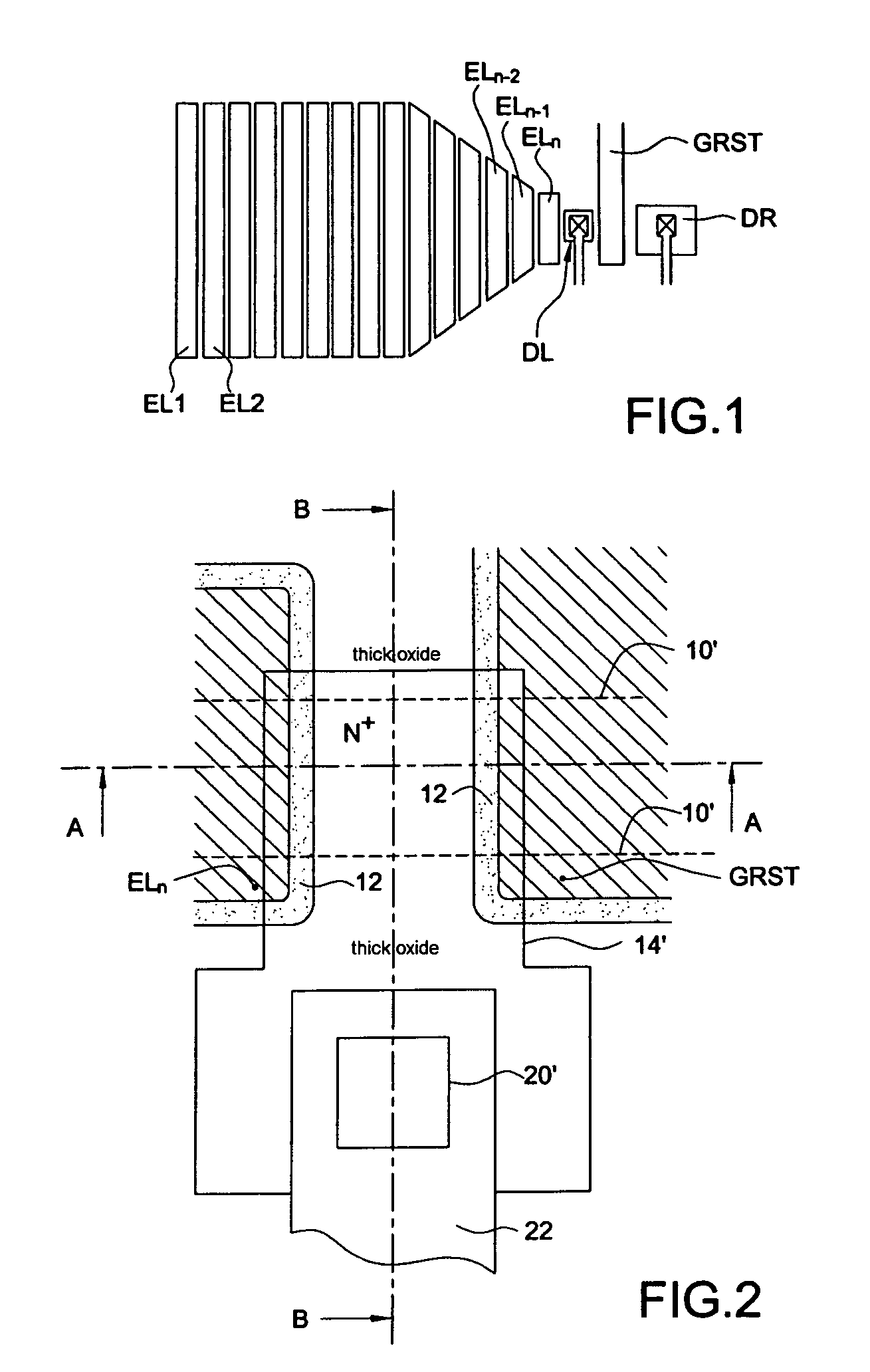Integrated circuit with a very small-sized reading diode
a reading diode, integrated circuit technology, applied in the direction of basic electric elements, semiconductor/solid-state device manufacturing, electric devices, etc., can solve the problem that the diode places a lower limit on the size of the diode to be given
- Summary
- Abstract
- Description
- Claims
- Application Information
AI Technical Summary
Benefits of technology
Problems solved by technology
Method used
Image
Examples
Embodiment Construction
[0023] In FIG. 2 (plan view) and FIGS. 3 and 4 (sections along AA and B, respectively), the readout diode DL is defined by an N+-type doped zone diffused into the P-type substrate 30. The doped zone constitutes one pole of the diode, and the substrate constitutes another pole.
[0024] In the lateral direction of FIGS. 2 and 3 (on the left and on the right in FIG. 2 and in FIG. 3), this zone is delimited in practice by the edges of the two gates or electrodes ELn and GRST which frame it. The electrodes are hatched in FIGS. 2 and 3. In the vertical direction of the page in FIG. 2 (at the top and at the bottom in FIG. 2, on the left and on the right in FIG. 4), the N+-type diffused zone is delimited by thick oxide regions 10 (conventional LOCOS thermal oxide). The dashed lines 10′ of FIG. 2 represent the edges of the thick oxide zones 10 framing the diode. The zone corresponding to the diode DL does not comprise thick oxide.
[0025] The gates ELn and GRST are made of polycrystalline sili...
PUM
 Login to View More
Login to View More Abstract
Description
Claims
Application Information
 Login to View More
Login to View More - R&D
- Intellectual Property
- Life Sciences
- Materials
- Tech Scout
- Unparalleled Data Quality
- Higher Quality Content
- 60% Fewer Hallucinations
Browse by: Latest US Patents, China's latest patents, Technical Efficacy Thesaurus, Application Domain, Technology Topic, Popular Technical Reports.
© 2025 PatSnap. All rights reserved.Legal|Privacy policy|Modern Slavery Act Transparency Statement|Sitemap|About US| Contact US: help@patsnap.com



